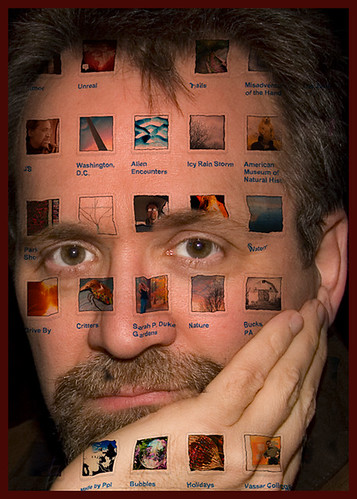
Wow! I was just named one of the '
Seven Leading Corporate Social Media Evangelists Today' according to Marshall Kirpatrick at ReadWriteWeb! What an honor- especially because of the other Evangelists i was listed among.
This is awesome. First because i am a huge fan of ReadWriteWeb and especially the research that Marshall Kirkpatrik does but more importantly because i truly believe (and have seen it with my own efforts) that Corporate Social Media can have a huge impact on how individuals 'run' their own 'business' in large corporations with benefits all around for clients, the company and themselves.
Early on as i started using Social Media as part of my daily routine, i got some very good advise from someone else on this list- Jeremiah Owyang- who gave me some '
Corporate Membranes' advice that had come from Robert Scoble and although at times i get frustrated with the "Corporate office" because they aren't moving fast enough for me, i keep pushing that membrane... and since i am lucky enough to work for a company that allows me to do it, it has worked out. i have been able to not only build my personal brand but i have had the chance to evangelize the use of Social Media across various groups internally like for example the encouragement of using Social Media tools with my colleagues that result in things like Wikis for
roundtables and the
Dow Jones Election Pulse blog.
So here is how i think this whole thing went down...another indication of the engagement with the new social media tools we use.

This morning, on Twitter @marshallk
twittered a request requesting people to nominate social media evangelists for companies. A bit later i saw cjmconnors twitter a nomination for me (i follow
cjmconnors and she is Christine Connors who is the Director of Semantic Technologies and Business Champion for Synaptica at Dow Jones).
Then i get this crypted message from
@chrissaad about my ears burning, as i continue to work and twitter along in between client calls and getting work stuff done, including working on a backdrop for a new
Synaptica Twitter account that i just put together a couple days ago to use as we announce our new V7 release. Then i get a Twitter Direct Message from
@jeffreymcmanus teasing me about being the new Scoble. "The new Scoble?-what the hell is he talking about?", so i head back to Twitter and bam- i remembered the twits and
saw this. What a rush!
Over the last year, partially because i have experienced such success, i have really picked up my pace of using social media to Evangelize the work i do; whether it is with personal projects like the
Dataportability Group that i am very passionate about or the work i do at Dow Jones- the tools vary but the objective is the same- put myself out there, become part of the community and give back.
Although i have been with Dow Jones going on eight years and blogging about information delivery in the Enterprise for about two years, since November, i have been in new role as Business Development Manager for Synaptica- our
taxonomy and metadata management solution. Never heard of it? Don't worry not a lot of people have, the solution is very well received in the marketplace and we have many major global companies using it- but honestly only people in the "know" know about it because it is a niche solution and when Factiva/Dow Jones
acquired Synapse- marketing it wasn't done very well and with our recent re-branding to Dow Jones/News Corp it only got worse.
Since i took this new role i have seen the gap in the marketplace as i speak to prospects (who for example tell me how they think i am very interesting from reading my blog but can't find any information on the tool!) and therefore i struggle that there isn't even landing page to point people to-duh! So over the last few weeks i have also been working internally with the help of some very supportive people from marketing and product and we have a great plan to continue on the social media work i have been doing for two years- so watch this space ;-) and see how i prove that i belong on the list of the 7 leading Corporate Social Media Evangelists!
***Thanks to everyone who has left such
kind words on the comments section of the RWW post and thank you for the nominations including Chris Saad's great quote!
 If i am not planning and organizing some event i am not happy- perhaps i missed my calling as an 'events coordinator' or something.
If i am not planning and organizing some event i am not happy- perhaps i missed my calling as an 'events coordinator' or something.









